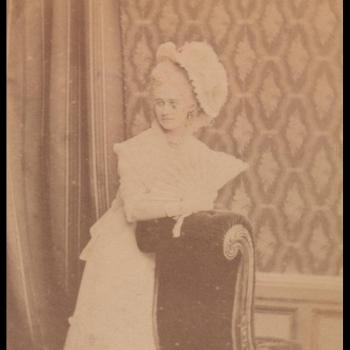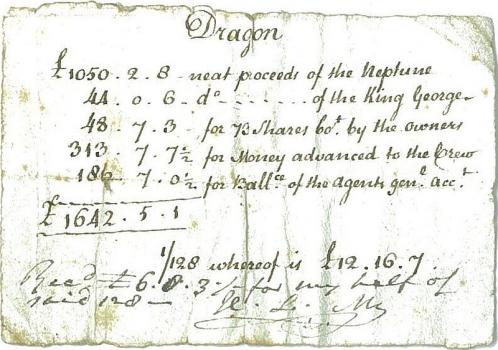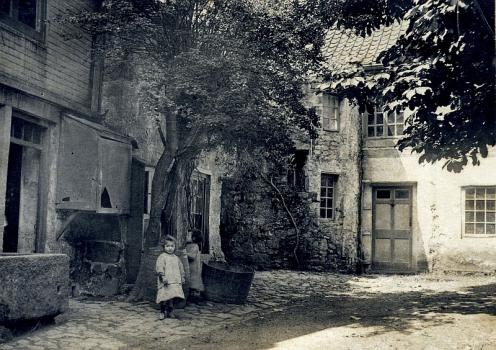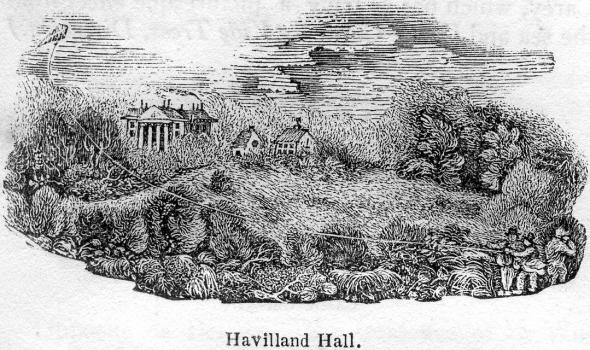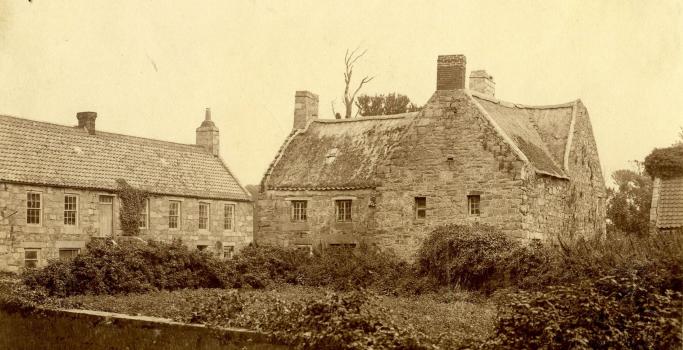'A good deal of the grimace of a Frenchman'. A short biography from The European Magazine, and London Review, for October 1801; and a less kind opinion of the Admiral, written by Admiral Thomas Byam Martin, a veteran of his campaigns who had fallen out with him, parts of whose account are often regarded as at the least fanciful. Saumarez was prone to depression, however.
'Oh happy night, enchanting sight, 'Neath garlands gay and floods of light, Brilliant eyes, balmy sighs, Shaming flow'r and lustre bright.' A report from the Star of 11 January, 1836. The photograph is a late 19th-century carte de visite, one of several in the Library Collection of subjects in fancy dress.
Privateering action in the 18th century.
A memoir of the late Colonel Havilland Le Mesurier. From the Gentleman's Magazine of 1814.
View from the North-east.
George Barrington was indicted for feloniously stealing, on the 19th of January, 1787, at the parish of St. Martin in the Fields, a silk purse value 2d. and twenty-three guineas, value £24 3s. and one half-guinea, value 10s. 6d. the property of Havilland Le Mesurier, Esq. privily from his person. From the Lawyer's and Magistrate's Magazine, Vol. I., 1792.
Builder of the now lost 'De Havilland's Bulwark', St George's Cathedral, St Andrew's Kirk and many other buildings at Madras, now Chennai, and here in Guernsey, Havilland Hall. From his book, The De Havillands of Guernsey, published in 1854. He died in 1866. The woodcut is by Dr Thomas Bellamy from his Pictorial Directory of 1843, in the Library collection.
The details of De Havilland's court martial, resignation, and restoration in India. 'Lord Minto, in his general orders from Madras, respecting the late defection or quarrel, published a list of twenty-two officers who were to be tried by court martial, or optionally to resign the service; my name was among these, and therefore I now avail myself of this opportunity to explain the grounds upon which I was implicated; in the hope that such explanation, faithfully given, may reach my descendants.'
'One of the quaintest possible specimens of an old Guernsey dwelling'; so says the author of a report in The Star, October 20, 1915, under the byline: 'Another ancient landmark disappearing.' The photograph is by Edith Carey. She says tradition had it that the house was built in the 12th century and was connected with the Fief au Comte; the house on the left was demolished in 1921.
From the Town Church Registers. Victims of the slave trade. The Rivoire family, and a letter from John Rivoire of Guernsey to his cousin, Paul Revere. He was a Captain of a militia company in Guernsey: his brother Captain William Rivoire was lost at sea.
The names of the Alderney people have been extracted and normalised.
A surprising dark side to life at the Town Hospital is hinted at in this Royal Court case. Unmarried local girls who became pregnant and who sought help at the Hospital, although treated kindly, were nevertheless put under a great deal of pressure to disclose the name of the father, so that he would be responsible for the child's maintenance and not the parish, but the threat extended to this girl is another thing entirely and seems to have terrified her. It should be noted that the Star newspaper chose not to mention the dress and represented the trial somewhat differently.

